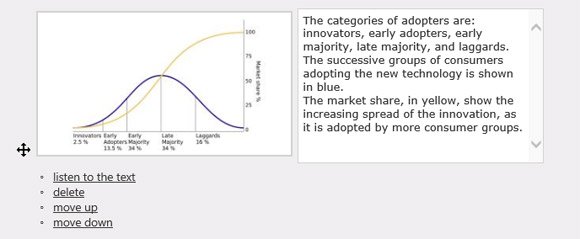How to Share PowerPoint Online as Talking Videos
PowerPoint presentations are a very efficient tool for communication, blending effectively images, text and voice comments to provide the audience with a fully immersive learning experience.

The knowledge and expertise included in PowerPoint presentations can also effectively be shared with a wider audience beside the one attending the live presentation. This could include colleagues, peers, prospects, customers, students, followers or the whole world. Sharing presentations online also provides the audience with the additional comfort of accessing the presentation anytime, anywhere and on multiple devices.
Let’s see what the options are when it comes to publish a PowerPoint presentation online. There are several strategies, each with advantages and disadvantages. Three well known and straightforward strategies are:
- Capturing the live presentation on video. This requires planning in advance and access to proper tools and video expertise to make a good quality video.
- Publishing the slides online using services like slideonline.com. This is a very fast and simple strategy. However the added value of vocal comments are lost, implying that this strategy is suited for text intensive presentations not needing any additional vocal comments.
- Recording a voiceover using a microphone using for instance a service like myBrainshark. This is a good strategy when there is time, equipment, a good voice and good language skills to make a proper voice recording.
A different strategy which has emerged recently consists in publishing PowerPoint presentations online as talking videos, using the SlideTalk service (www.slidetalk.net).
A talking video is a video in which each slide has a voice comment which is generated using text-to-speech. Let’s have a look at one talking video example created from a PowerPoint presentation:
The advantage of talking videos is that they allow to keep the added value of voice comments, but they do not require any recording whatsoever. The comments are just typed in plain text next to the slides, as shown in the screenshot here below, and then transformed into audio by text-to-speech:

The shift from recorded comments to typed texts, as used in talking videos, makes it also very easy to review the comments to a presentation at any time, even after having shared the presentation. All that is required to do is to edit the texts, without any need of redoing voice or video recordings.
The SlideTalk service also provides multilingual text-to-speech possibilities, allowing sharing PowerPoint presentations as talking videos in several languages. This is of particular help for PowerPoint creators having English as second language, since it allows to share a presentation with proper English pronunciation just by typing English text, avoiding awkward recording sessions.
With SlideTalk service you can:
- Upload slides or PowerPoint files and start building your talking video from an existing presentation.
- Type a comment for each slide as regular text and the service will convert the presentation to voiceover by using a high quality text-to-speech (TTS) technology.
- Convert a PowerPoint to video and share video online so you can automatically publish it on YouTube.
To summarize, we have highlighted here some of the benefits of sharing PowerPoint presentations online, and looked at several strategies for achieving that, depending on the author’s needs, skills, equipment, time and budget.
Learn more on www.slidetalk.net
